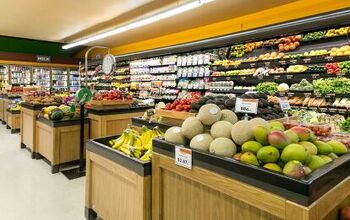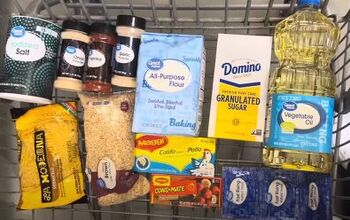How to Stretch Your Food Budget & Save Money

With stagnant wages becoming the norm and inflation on the rise, learning how to stretch your food budget is critical for most families these days.
Let’s face it, nothing feels worse than going to the store and not being able to buy everything you need for the week ahead.
To solve this ever-growing problem, I’m sharing five tips to stretch your groceries this month and finally get ahead.
1. Take inventory
Looking for the best way to stretch food? Meal planning is important, but the number one tool you can have in your back pocket is to take inventory of what you already have in your fridge, freezer, and pantry.
For me, it’s such a great tool because that's how I'm able to come up with additional meals that I didn't plan on originally.
These meals are based on what I already have at home, so I'm not shopping for anything new, am saving money, and am using up every ounce of food I already bought — whether it's currently being stored in the fridge, freezer, or pantry—while still budgeting for that week.
2. Freeze items before they go bad
Anytime I go through my fridge and I see something that I know I'm either not going to use on time or it doesn't look like it's doing very well anymore, I chop it up, put it in a freezer bag, and place it in the freezer.
By freezing it, I’m pressing the pause button on the life of that item. Plus, when I need a certain ingredient for a recipe, I only have to take it out and thaw it. No more quick trips to the store.
3. Use staple items
Using inexpensive staple items like beans, rice, oats, or pasta can help you stretch any meal for a fraction of the cost of loading up on the more expensive food items, like meat and dairy.
For example, one can of beans that you can easily throw into a recipe to bulk it up costs maybe seventy cents to a dollar depending on if you get it on sale or not.
For a dollar, I recently bought a whole bag of dry kidney beans, let it soak overnight in a bowl of water on my counter, and then threw them in along with a bunch of water in my Crock Pot, letting it cook for four hours.
Once they were ready to eat, I portioned them out into two-cup servings and vacuum-sealed them because I knew I wasn't going to use them all right away.
Another tip I want to share with you is when you're adding vegetables to bulk up a meal, make sure that the vegetables that you're adding are small because that way they add more volume.
For example, to make a hearty meal, I can take one package of ground chicken and stretch it by adding finely chopped vegetables, beans, and rice.
This feeds my family of five a healthy meal and hopefully leads to leftovers for tomorrow as well. Talk about a great way of taking one protein, especially chicken since it's really expensive around here, and stretching it into possibly two delicious meals.
4. Use seasoning to add flavor
To add flavor to any meal, especially those with lots of staple items thrown in, use plenty of seasoning from your pantry.
I like to put in equal parts of my favorite herbs and spices, like garlic powder, cumin, chili powder, turmeric, and paprika. Doing so makes food look and taste more flavorful than before.
5. Wash and store produce
Another time-saving and money-saving tip is to wash all produce right away, dry it really well, then line the container you’re storing the produce in with paper towels both on the top and the bottom before putting it in the fridge.
I currently have a container of kale that has been in the fridge for five days and the kale is just as crispy as when I bought it.
Now all I have to do is add it to a pot of water and make my regular kale recipe as usual because it's already prepped, chopped, and clean. There’s no prep time needed since it’s already done and I’m not wasting money because it gets used up.
5. Budget-friendly meals
Look at how nutritious and delicious budget-friendly meals that are loaded with staple items can turn out to be. Mostly from pulling things I already owned from my fridge, freezer, and pantry, I created a meal that is both healthy and flavorful.
Plus, this is an extra meal that I was not planning on making until I decided to use up grocery items that we already had at home. So I ended up saving both time and money while clearing out space before my next shopping trip. Doesn’t it look delicious?
How to stretch your food budget
I hope you found my advice on how to stretch your food budget helpful. If you want to stretch food and stay on top of your monthly budget, it’s important to think intentionally about the choices you’re making and plan your meals accordingly.
Share your own best tips to stretch your groceries in the comments section below.



























Comments
Join the conversation